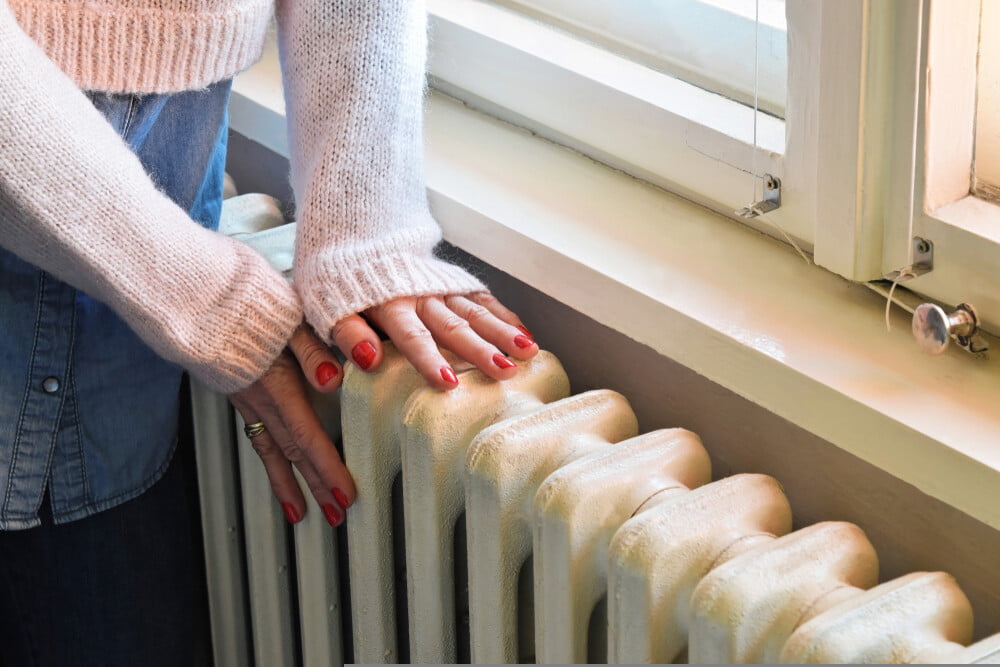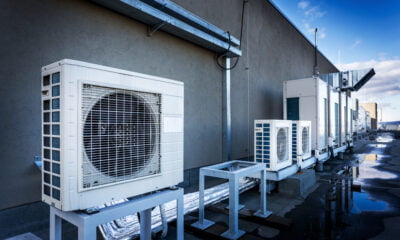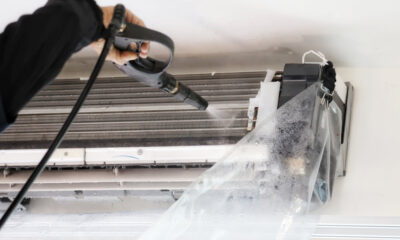

Environment
4 Critical Radiator Hacks To Lower Your Carbon Footprint
We have talked in detail about the importance of making your home more energy efficient. One of the factors that we haven’t talked as much about is the importance of using your radiators in the most efficient way.
The University of Columbia points out that heating homes creates a large carbon footprint. However, the amount of energy that is expanded is heavily determined by the efficiency of the heating methods used.
Radiators are often a cumbersome sight in rooms around the home. They are devices that many people don’t have much interest in learning about. However, using them properly is very important. They can use a lot of energy if you aren’t careful, which leaves a large carbon footprint.
Unfortunately, most radiators only have a valve on the side and no indication of how much heat it provides. The lack of information can keep people from learning how to control radiators around the home. They’re essentially left alone as something that runs through the heat like there’s no tomorrow to get rooms warm.
Finding the Right Radiator Settings is Important to Save Energy and Lower Your Carbon Footprint
If you are serious about saving the planet, then you need to make sure that your radiator is set properly. You will use less energy, which is going to lower your carbon footprint.
We previously talked about some different radiators that you can use to lower your energy consumption. We mentioned that cast iron radiators are more energy efficient, which will help lower your carbon footprint.
However, it is also important to make sure that you know how to use your radiator properly. Even the eco-friendliest radiator will be harmful to the planet if you don’t use it efficiently.
How to Make Your Radiator More Energy Efficient
There are ways though you can utilize simple tools and changes to understand how the radiator in any room is performing, and how energy use can be lowered in the long-term. Let’s look at some simple methods to improve your home heating, none of which involve any major work on your part.
Understanding your room’s heat output
Every room in your home will have different heat requirements. People often make the mistake of getting the biggest radiator they can fit on a wall as they believe that bigger is always better, but that isn’t necessarily the case.
A room will have a sweet spot where it will be nice and toasty, but finding this setting isn’t just a stab in the dark. It is based on a figure known as BTU, which calculates the amount of heat needed to raise the temperature of water (that’s the simplest definition of it anyway). To work it out, you only need a tape measure and to use a heating calculator. A heating calculator isn’t like a scientific calculator you had in high school, so there is no need to worry about buying some fancy calculator. You’ll find free heating calculators online. I recommend using Trade Radiators calculator as it can give you a rough BTU rating with just four measurements.
When you understand what the heating requirement of a room is, it makes finding the right sized radiator (one which won’t waste energy) all the more easier. In turn, it should help lower energy usage in the long-term. And if you can’t afford a new radiator just now, getting to master your radiator valves will come in handy.
Understanding how radiator valves work
In my opinion, the radiator valve is the most misunderstood piece of equipment in every home. Most people will blindly turn their valves to the max to get a room warm, but that isn’t how they work at all.
Think of your radiator valve like your kitchen tap. You’re turning the valve to open up and let hot water in, which then heats your room. If you wanted to have hot water in your sink and keep the water running, so it was continually warm, you would have to leave the tap fully open all day, so it is constantly having water gush in, or would you have it low to trickle through and keep a consistent rhythm.
If you’re clueless with valves, I recommend getting a cheap thermostatic valve. They’re the ones with a gauge or numbers printed on which correlate to how much water you’ll let in, which in turn let you adjust the temperature of the radiator.
Getting smart with heating
Of course, you could completely bypass the need to master what your radiator valves are trying to tell you by getting a smart radiator valve installed instead.
These digital valves can be connected via your home Wi-Fi to your central thermostat, or even directly to your phone, allowing you to control the temperature in every room right from the palm of your hand.
They’re a little more expensive than other valves, but they’re going to help you save so much money on heating bills, and lower energy use in the long-run.
You can also consider using heat pumps to improve the efficiency of the room. The IEEE reports that this can be great for energy efficiency.
Dispelling the all-day myth
One last point I’d like to make with regards to lowering energy usage involves the long-held theory that having your heating on all day at a lower temperature is better than having the heating on for short bursts in the morning and evening.
This isn’t true. When you have the home heating on all day long, there will be continual energy loss no matter what. Your boiler, or whichever heating source you have, will have to continually keep itself on, rather than top up the hot water in intervals.
If you’ve had home heating on for longer periods at a lower temperature, changeover to shorter periods to lower energy usage.
Save the Planet by Setting Your Radiator Properly to Conserve Energy
I hope you’ve got some helpful information from this article. Remember to check all the energy articles on the site to improve how you use energy and heat your home.


 Environment10 months ago
Environment10 months agoAre Polymer Banknotes: an Eco-Friendly Trend or a Groundswell?

 Environment12 months ago
Environment12 months agoEco-Friendly Home Improvements: Top 7 Upgrades for 2025

 Features9 months ago
Features9 months agoEco-Friendly Cryptocurrencies: Sustainable Investment Choices

 Features11 months ago
Features11 months agoEco-Friendly Crypto Traders Must Find the Right Exchange





























